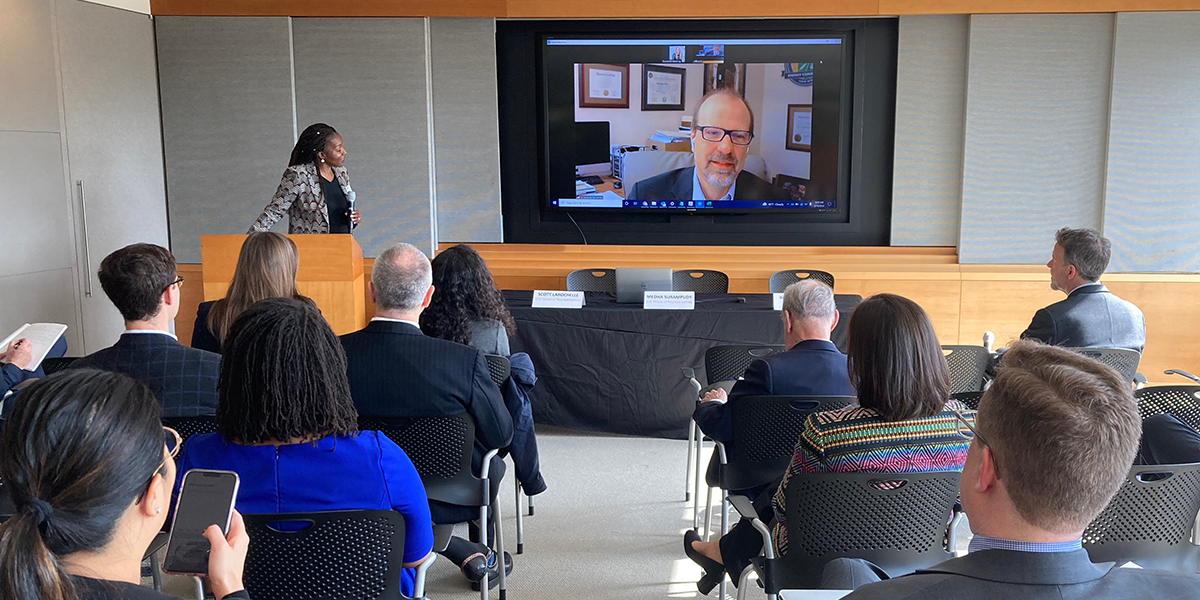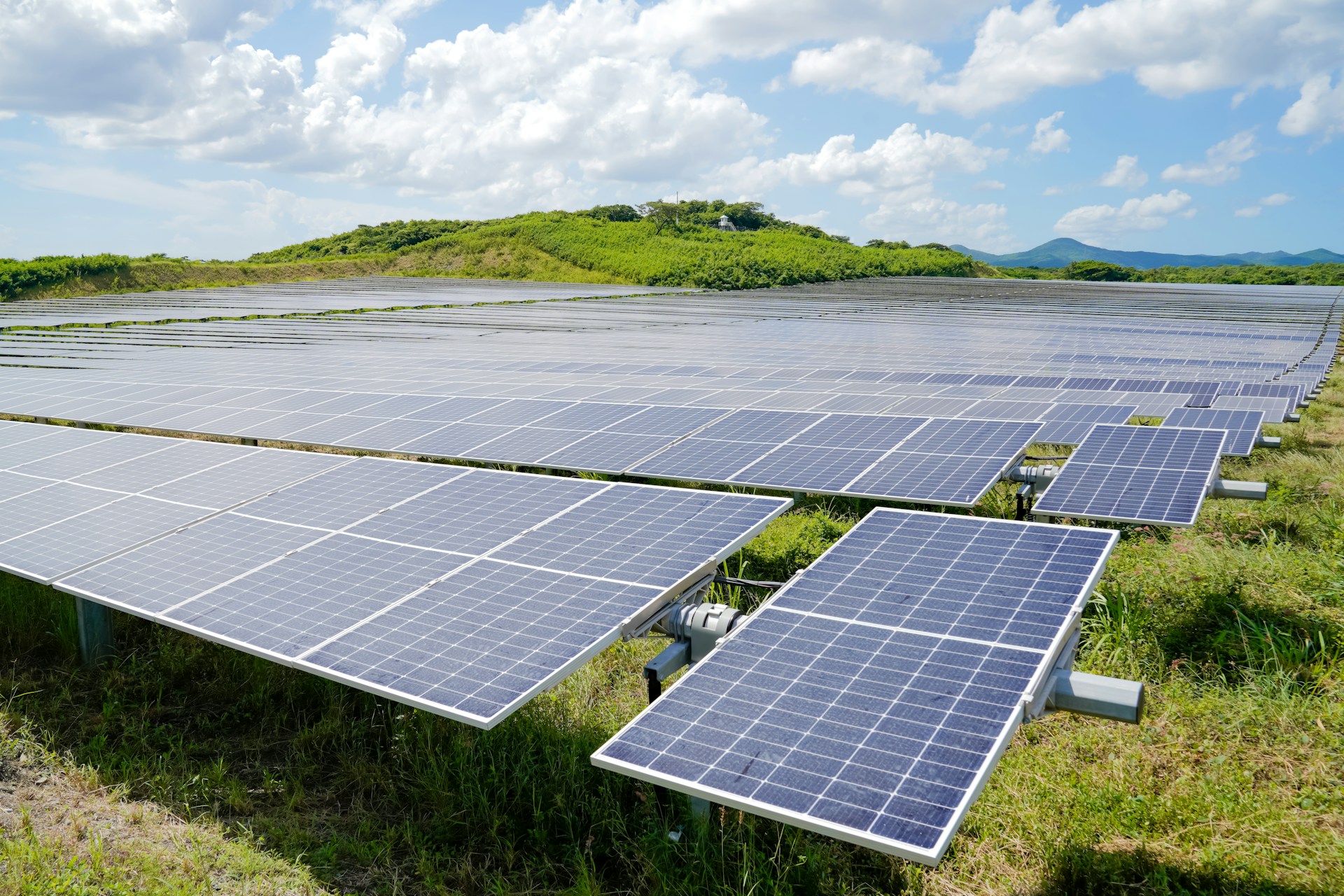2022 Policy Summit Recap: What’s Next for Efficiency Policy?
Let's Save Energy
Alliance to Save Energy's Blog

Alliance President Paula Glover introduces California Energy Commissioner Andrew McAllister at the 2022 Policy Summit.
The Alliance to Save Energy’s 2022 Policy Summit, hosted in Washington, D.C. on Thursday, March 10, brought together policy and industry leaders to discuss the current state of energy efficiency legislation. The summit featured remarks on the defining moment we face today and an expert panel exploring current priorities on Capitol Hill. Couldn’t make it? Catch up by reading our takeaways below – and make sure you don’t miss our next Alliance signature event by registering now for EE Global Forum, in-person in Washington on June 15.
1. We are facing a defining moment for energy efficiency.
In her opening remarks, Alliance President Paula Glover underscored that much as energy efficiency proved to be the solution for the energy crisis of the 1970s – which led to the formation of the Alliance 45 years ago this month – efficiency must be the solution we turn to as we seek to address the affordability, equity, and reliability challenges inherent to achieving a just energy transition. As the U.S. faces skyrocketing energy prices, accelerating impacts of climate change, and a movement for social justice in our energy and economic systems – not to mention renewed questions about the relationship between the energy industry and national security – it’s clear that 2022 marks a turning point in delivering on the next decades of efficiency progress. It’s on us to meet the moment – which brings us to takeaway number two.
2. Efficiency policy is moving forward – despite the pause on reconciliation.
We cannot address the challenges outlined above without securing bold, forward-looking energy efficiency policies. In “Energy Efficiency Priorities in the 117th Congress,” – a panel moderated by California Energy Commissioner Andrew McAllister and featuring Honeywell Government Relations Specialist Rebecca Seewald, Senior Legislative Assistant for the House Committee on Ways and Means Scott La Rochelle, and Professional Staff Member for the House Committee on Energy and Commerce Medha Surampudy – speakers provided their insight on where things stand on Capitol Hill.
Panelists were the first to acknowledge that the crisis in Ukraine has understandably taken some attention away from domestic policy. A climate and clean energy-focused reconciliation package like the one that passed the House last November has not yet moved forward in the Senate. However, the pause on reconciliation doesn’t mean there aren’t substantial opportunities for efficiency legislation in 2022. Panelists said updates to energy efficiency tax incentives are likely in some form before the end of the year, and that non-tax programs including the Main Street Efficiency Act remain a priority. And don’t forget the programs that already exist: panelists described efforts underway to ensure that the $1.5 trillion passed in the Infrastructure Investment and Jobs Act (IIJA) last year are spent in the most green and equitable manner possible. One example cited by Seewald of how that funding can be used to further efficiency goals is the new National Building Performance Standards Coalition, announced by the White House in January, which will use funding from the IIJA to build a coalition of state and local governments committed to passing building performance legislation by Earth Day 2024.
3. The administration is all hands on deck.
Principal Deputy Assistant Secretary at EERE Kelly Speakes-Backman closed out the Policy Summit with a keynote focused on the administration’s ongoing efforts supporting energy efficiency, reiterating the importance of efficiency as the first solution to achieving an affordable, reliable, and equitable energy transition. She discussed how funds from the IIJA are helping the administration to double down on efforts around industrial efficiency (such as with the Better Plants program) and building efficiency (e.g., the E3 initiative for heating and cooling and the Better Buildings program). Finally, she emphasized that collaboration and equity are the two themes that must underpin efficiency progress, because “we know building this clean energy future only works if we bring communities and workers along with us – and we are learning from them, not just telling them what they can do.”
“Efficiency is one of the easiest and most cost-effective ways – and it should be the first way – that we address climate change, we clean the air we breathe, we improve the competitiveness of our businesses, and we reduce energy costs for consumers … the cheapest electricity is the electricity you don’t use.”
– Principal Deputy Assistant Secretary for the Office of Energy Efficiency and Renewable Energy (EERE) Kelly Speakes-Backman, Alliance to Save Energy 2022 Policy Summit.
Thank you to all our speakers and to everyone who attended the 2022 Policy Summit. Our team loved being able to connect with the energy efficiency community in-person again after nearly two years apart, and we hope to see everyone at EE Global Forum on June 15. In the meantime, our industry will be facing a busy couple months ahead as we fight for lasting energy efficiency solutions at this critical juncture.
To hear more about the Alliance’s 2022 priorities, provide your perspective on how to meet this moment, or – if you are not yet an Associate – learn how you can join the Alliance’s efforts, please contact associates@ase.org.
RECENT BLOG POSTS
STAY EMPOWERED
Help the Alliance advocate for policies to use energy more efficiently – supporting job creation, reduced emissions, and lower costs. Contact your member of Congress.
Energy efficiency is smart, nonpartisan, and practical. So are we. Our strength comes from an unparalleled group of Alliance Associates working collaboratively under the Alliance umbrella to pave the way for energy efficiency gains.
The power of efficiency is in your hands. Supporting the Alliance means supporting a vision for using energy more productively to achieve economic growth, a cleaner environment, and greater energy security, affordability, and reliability.



